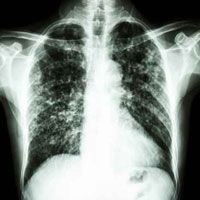Article
COPD, Asthma Symptoms Frequently Present in Adults with Obstructive Airway Disease
Author(s):
About half of all adults afflicted with obstructive airway disease have symptoms overlapping with chronic obstructive pulmonary disease (COPD) and asthma. According to data presented at the American College of Allergy, Asthma and Immunology (ACAAI) Annual Scientific Meeting, this makes the possibility of misdiagnosis and mistreatment more likely.

About half of all adults afflicted with obstructive airway disease have symptoms overlapping with chronic obstructive pulmonary disease (COPD) and asthma. According to data presented at the American College of Allergy, Asthma and Immunology (ACAAI) Annual Scientific Meeting, this makes the possibility of misdiagnosis and mistreatment more likely.
While bronchodilators are used to treat both COPD and asthma, extensive and long-term treatment are more condition-specific. For example, asthmatics are often given instructions to not have pets or avoid pollen. For COPD patients — while they are told to avoid similar triggers — more emphasis is placed on not smoking cigarettes.
“The primary treatment in COPD is bronchodilators, including long-acting beta agonists. They help relax muscles around the airways in the lungs, allowing air to flow more freely,” said Michael Foggs, MD, ACAAI president and allergist. “They should not be given alone to people with asthma. In COPD, but not asthma, inhaled corticosteroids have been associated with an increased risk for pneumonia and in some cases, features of both asthma and COPD exist. For these patients a combination of inhaled corticosteroids and long-acting beta agonists is usually best.”
An accurate asthma of COPD diagnosis can be difficult to pinpoint. While both conditions affect lung function and have similar symptoms, their development is unique. For asthmatics, airway inflammation results in changes to how the lung operates. However, for COPD sufferers, their condition is mainly sparked by cigarette smoking.
To prevent incorrectly treating COPD and asthma patients, the ACAAI recommended patients divulge their symptoms and complete medical history to their allergists.
“They [bronchodilators and long-acting beta agonists] should not be given alone to people with asthma. In COPD, but not asthma, inhaled corticosteroids have been associated with an increased risk for pneumonia and in some cases, features of both asthma and COPD exist. For these patients a combination of inhaled corticosteroids and long-acting beta agonists is usually best,” Foggs said.





